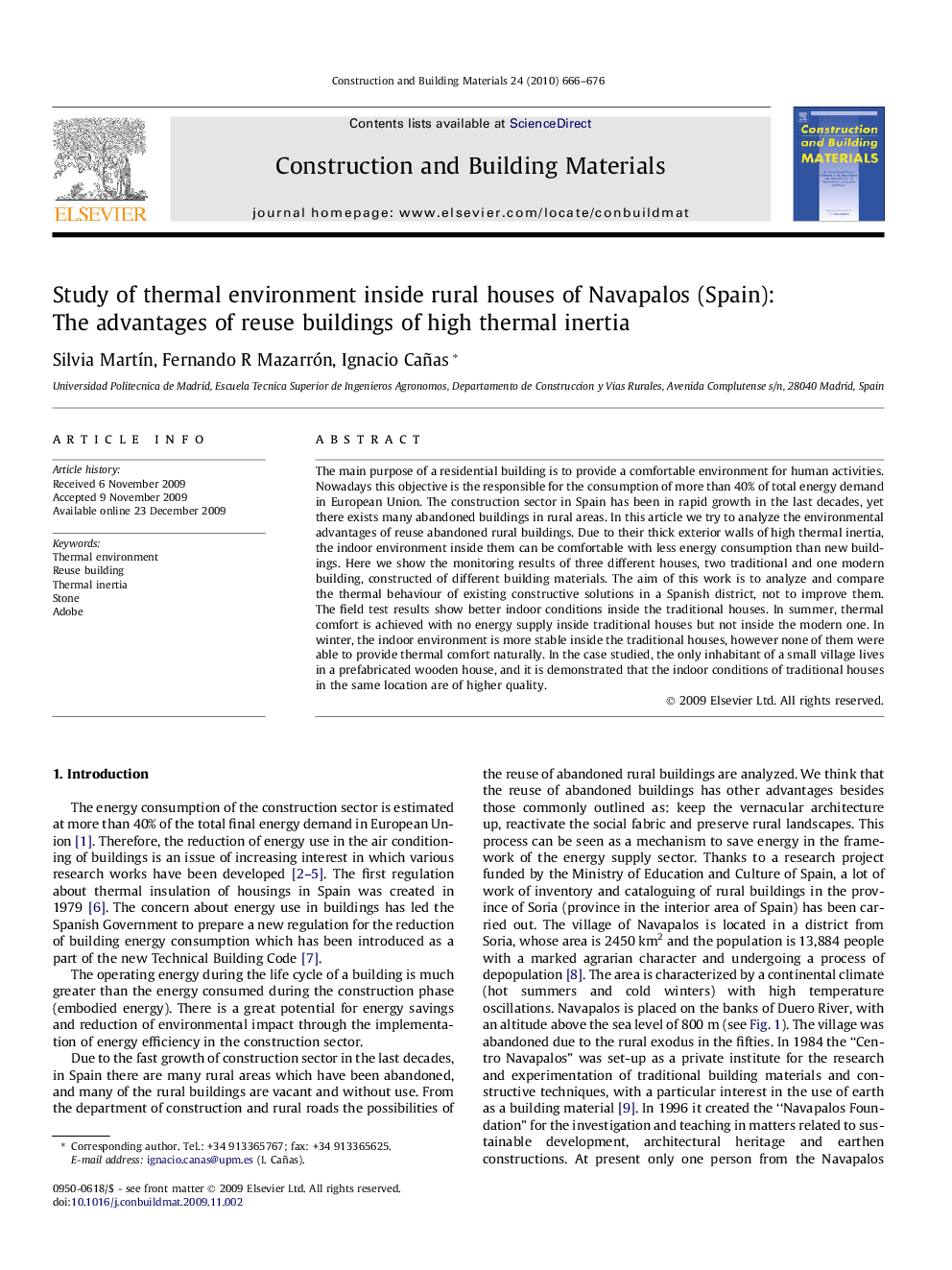| Article ID | Journal | Published Year | Pages | File Type |
|---|---|---|---|---|
| 259514 | Construction and Building Materials | 2010 | 11 Pages |
The main purpose of a residential building is to provide a comfortable environment for human activities. Nowadays this objective is the responsible for the consumption of more than 40% of total energy demand in European Union. The construction sector in Spain has been in rapid growth in the last decades, yet there exists many abandoned buildings in rural areas. In this article we try to analyze the environmental advantages of reuse abandoned rural buildings. Due to their thick exterior walls of high thermal inertia, the indoor environment inside them can be comfortable with less energy consumption than new buildings. Here we show the monitoring results of three different houses, two traditional and one modern building, constructed of different building materials. The aim of this work is to analyze and compare the thermal behaviour of existing constructive solutions in a Spanish district, not to improve them. The field test results show better indoor conditions inside the traditional houses. In summer, thermal comfort is achieved with no energy supply inside traditional houses but not inside the modern one. In winter, the indoor environment is more stable inside the traditional houses, however none of them were able to provide thermal comfort naturally. In the case studied, the only inhabitant of a small village lives in a prefabricated wooden house, and it is demonstrated that the indoor conditions of traditional houses in the same location are of higher quality.
